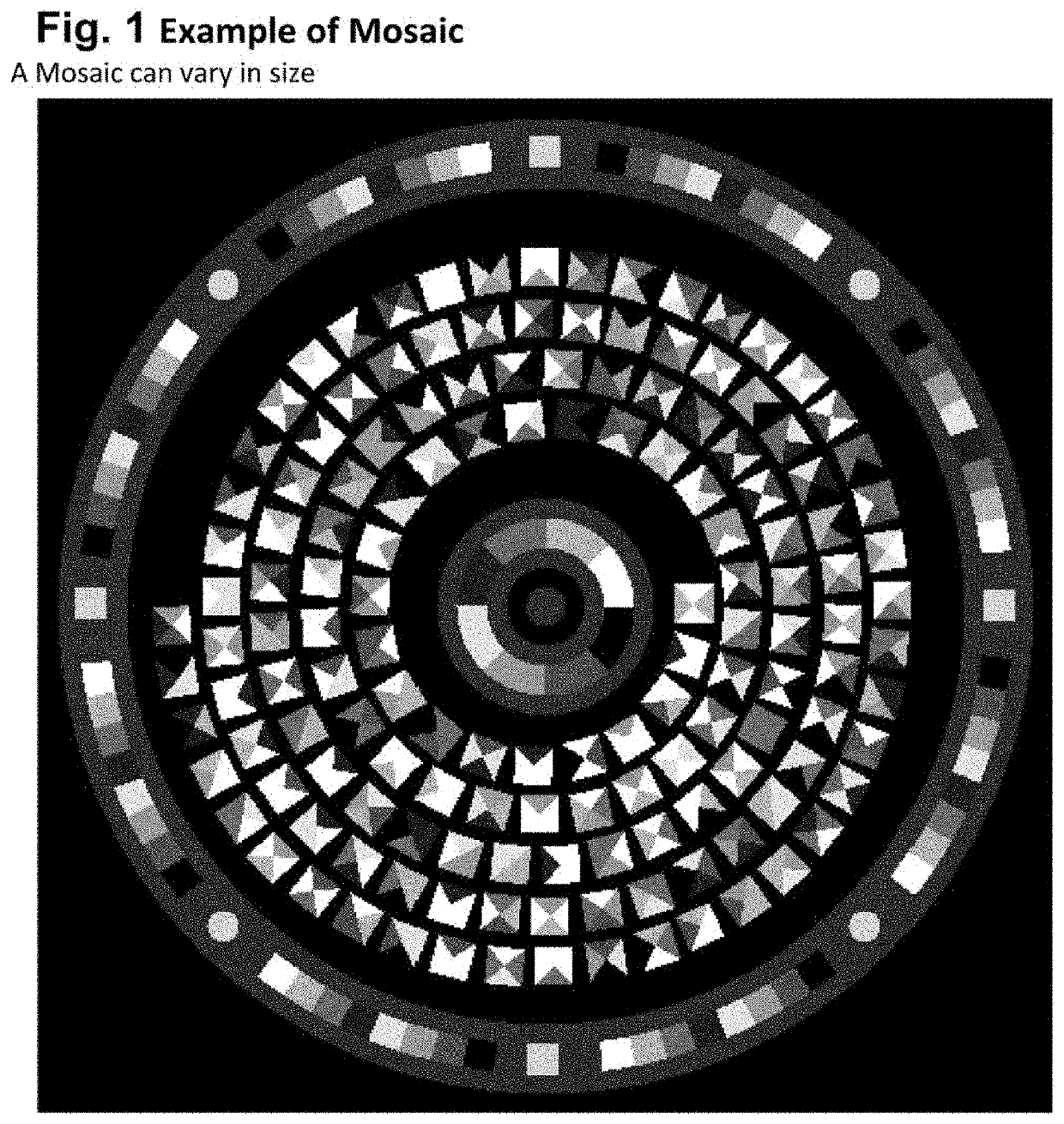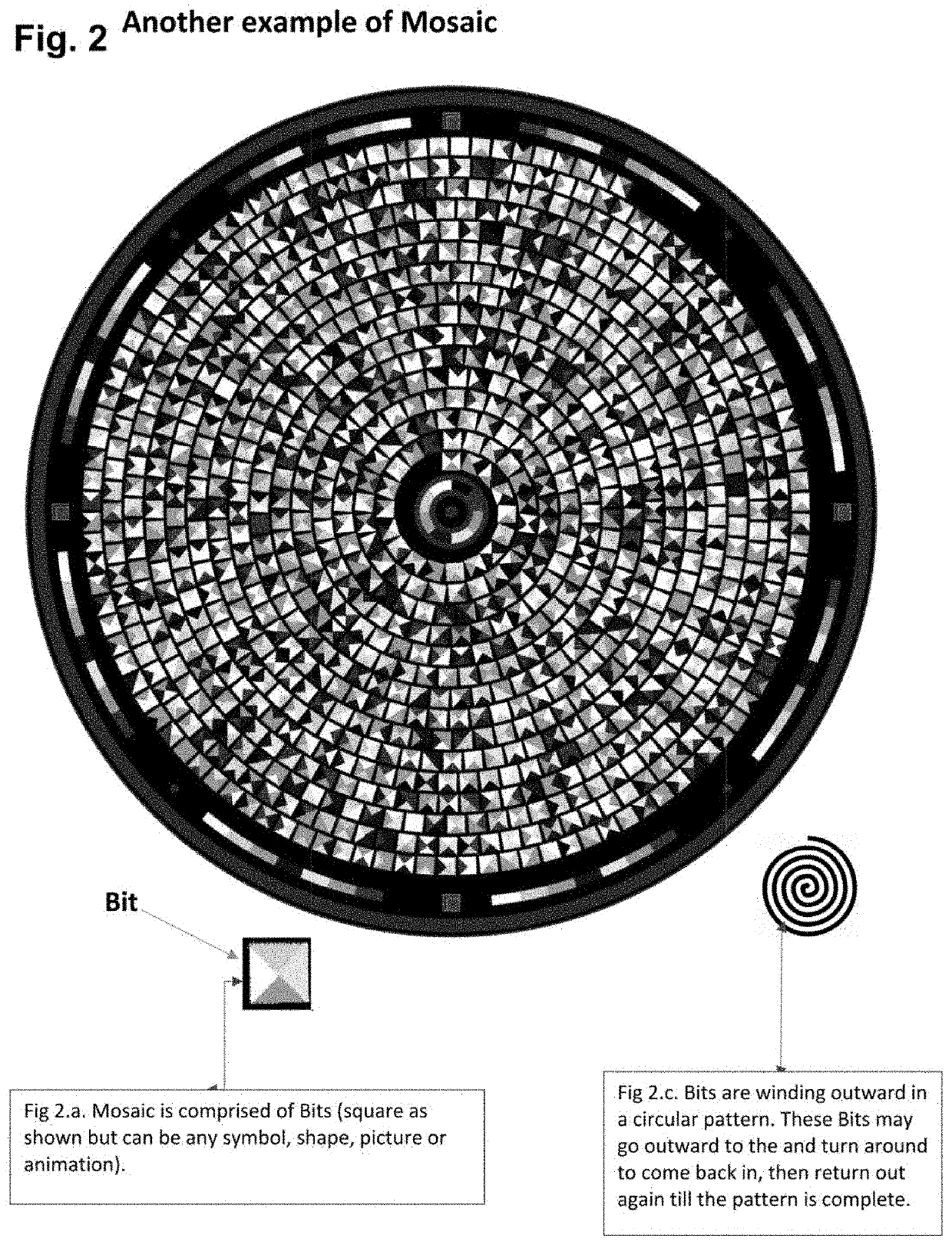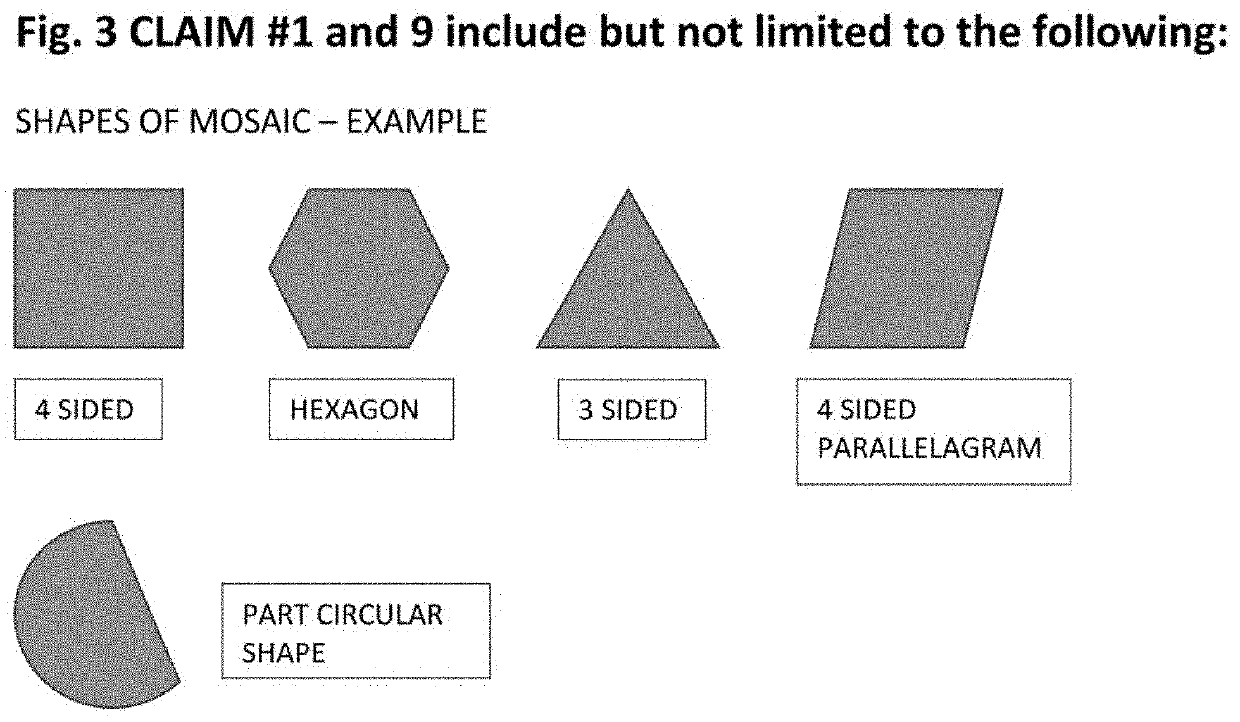System and method using optical tags to conduct secure transactions and authentications
a technology of optical tags and transactions, applied in the field of systems and methods using optical tags to conduct secure transactions and authentications, can solve the problems of billions of dollars in damage, aggravating and time-consuming undoing of damage, and difficult use of e-commerce and brick and mortar, and achieve the effect of maintaining a safe environmen
- Summary
- Abstract
- Description
- Claims
- Application Information
AI Technical Summary
Benefits of technology
Problems solved by technology
Method used
Image
Examples
Embodiment Construction
[0061]The present invention is based around optically or wirelessly scannable multiplex codes composed of an enclosed shape defined by a frame which guides the software to the relevant scanning area, as shown in FIGS. 1 and 2. The border is the outermost solid rim of the tag.
[0062]As shown in FIG. 3, it is understood that the design can be various shapes hexagonal, square, triangle, pentagonal, septagonal, octagonal and onwards to an increasing in number of sides infinitely and also not limited to polygons (e.g. semicircles, as shown in FIG. 3).
[0063]The multiplex code is comprised of a unique pattern of digital tiles (similar to a multiplex code using real tiles) to form a pattern or picture. FIG. 2a demonstrates an example of a digital tile.
[0064]The possible composition, arrangement and number of the tiles are infinite. For example in FIG. 2c, the tiles are squares in an outward-winding circular pattern. Alternatively, the tiles may flow outward to the outer rim and turn around t...
PUM
 Login to View More
Login to View More Abstract
Description
Claims
Application Information
 Login to View More
Login to View More - R&D
- Intellectual Property
- Life Sciences
- Materials
- Tech Scout
- Unparalleled Data Quality
- Higher Quality Content
- 60% Fewer Hallucinations
Browse by: Latest US Patents, China's latest patents, Technical Efficacy Thesaurus, Application Domain, Technology Topic, Popular Technical Reports.
© 2025 PatSnap. All rights reserved.Legal|Privacy policy|Modern Slavery Act Transparency Statement|Sitemap|About US| Contact US: help@patsnap.com



